- News
- Reviews
- Bikes
- Accessories
- Accessories - misc
- Computer mounts
- Bags
- Bar ends
- Bike bags & cases
- Bottle cages
- Bottles
- Cameras
- Car racks
- Child seats
- Computers
- Glasses
- GPS units
- Helmets
- Lights - front
- Lights - rear
- Lights - sets
- Locks
- Mirrors
- Mudguards
- Racks
- Pumps & CO2 inflators
- Puncture kits
- Reflectives
- Smart watches
- Stands and racks
- Trailers
- Clothing
- Components
- Bar tape & grips
- Bottom brackets
- Brake & gear cables
- Brake & STI levers
- Brake pads & spares
- Brakes
- Cassettes & freewheels
- Chains
- Chainsets & chainrings
- Derailleurs - front
- Derailleurs - rear
- Forks
- Gear levers & shifters
- Groupsets
- Handlebars & extensions
- Headsets
- Hubs
- Inner tubes
- Pedals
- Quick releases & skewers
- Saddles
- Seatposts
- Stems
- Wheels
- Tyres
- Health, fitness and nutrition
- Tools and workshop
- Miscellaneous
- Cross country mountain bikes
- Tubeless valves
- Buyers Guides
- Features
- Forum
- Recommends
- Podcast
TECH NEWS
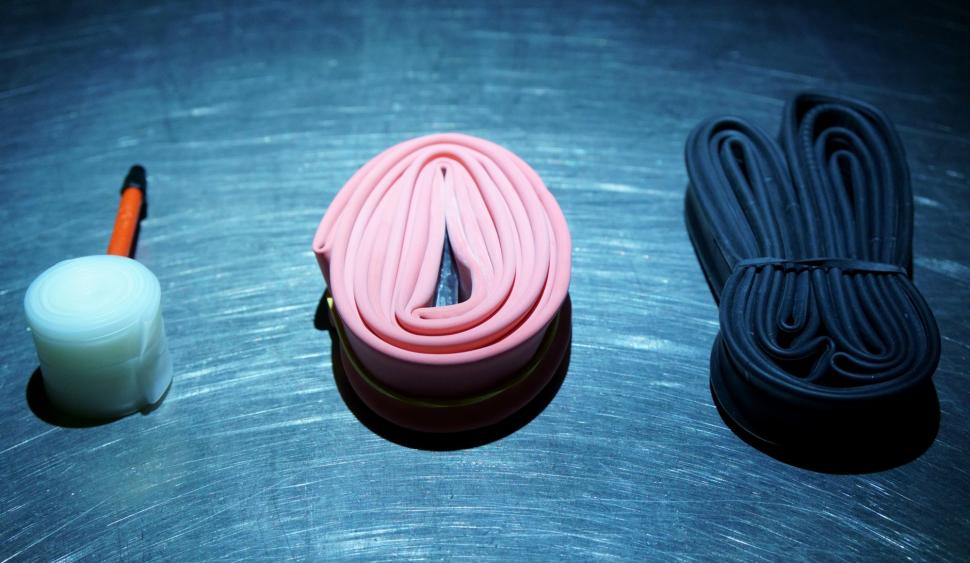 2022 Vittoria TPU latex butyl inner tube - 1
2022 Vittoria TPU latex butyl inner tube - 1Butyl v latex v TPU inner tubes: which should you choose?
If you use a wheel/tyre system that takes inner tubes, a new white paper from Vittoria explains how to choose between butyl, latex and TPU (thermoplastic plastic) options.
The Bicycle Inner Tube Materials and Applications white paper has been written by Ken Avery, Vittoria’s senior vice president, product development, and it covers the three main types of inner tubes used today, including the strengths of each.
It must be pointed out, Vittoria has recently launched its Ultra Light Speed TPU inner tube, although it offers butyl and latex tubes too.
Best bike inner tubes 2022 — save weight, ride faster and prevent flats
Of course, many riders have moved on to tubeless setups these days, but the white paper points out that even these systems can fail due to expired sealant or large holes that the sealant can’t fix, for instance, so carrying a backup inner tube is good practice.
“[Butyl rubber] is an excellent choice for inner tubes, as it exhibits quite positive shock absorption characteristics for durability while returning low moisture and gas permeability to maintain internal pressure,” says Ken Avery.
He points out that black butyl inner tubes are by far the most common kind found on new bikes and they’re easily patched if you puncture. You can get lightweight butyl tubes, thicker-walled versions to minimise the chances of puncture and self-sealing ones that contain a liquid that’s designed to plug small holes automatically.
However, butyl isn’t especially light and the rolling resistance is higher than that of other options.
“The level of elasticity of butyl rubber is slightly lower than with some other tube materials, which contributes to increased internal friction between the tube and the inside of the tyre, causing negative effects on rolling resistance in high-performance use,” says Ken Avery.
Latex has certain benefits as a material for inner tubes compared with butyl.
“As the material allows for increased flex and stretch, the propensity for the tyre to deflect from road surface imperfections is reduced, resulting in an overall reduction of rolling resistance,” says Ken Avery.
“Adding to the allure, the natural flex of latex, and the resulting increase in performance does not come at the cost of weight, as latex inner tubes are typically on par, if not lighter than the lightest ultralight butyl inner tubes.
“The highly elastic trait of latex is also what makes it potentially less prone to punctures, as oftentimes the material will stretch around the offending puncture item (nail, glass, thorn, etc), rather than be pierced by it.”
Are the wrong inner tubes costing you time?
On the downside, latex inner tubes don’t hold their pressure as well as butyl ones and patching latex can be difficult, but they’re still “an easy and affordable upgrade for any performance-minded rider”.
TPU (short for Thermoplastic Polyurethane) inner tubes are a much more recent alternative. As a material TPU has the characteristics of both plastic and rubber – head mouldable like plastic, flexible like rubber. Why would you switch to TPU?
“The reasons are many, but chief among them is the impressive reduction in weight and rolling resistance, while at the same time increasing puncture protection,” says Ken Avery.
“The highly elastic TPU material raises performance to levels previously unreached with either butyl or latex while returning a further reduction in punctures, all while also increasing air retention.
“TPU not only improves upon the performance of latex but also cures the main setback, by providing a system which is less susceptible to lose air over long periods of time.
“TPU inner tubes have the ability to reduce environmental impact during manufacturing through a reduction of raw material and increase sustainability at end-of-life as they can be recycled for other uses.
TPU inner tubes are more expensive than other options but Avery agrees that they are good value in terms of increased performance.
“The dollar spent per watt saved in rolling resistance is nearly impossible to beat when upgrading to TPU tubes, especially when compared to butyl alternatives,” he says.
“If you are a rider who seeks the ultimate in performance, and appreciates the simplicity and hassle-free installation and maintenance of a tube-type system, then TPU inner tubes are likely the right fit for you.”
Vittoria’s white paper shows several charts that compare the characteristics of the three inner tube types.
This one shows weight comparison data between butyl, latex and TPU. Like the charts below, it’s based on Vittoria’s internal laboratory data.
Rolling resistance comparison data.
Durability comparison data.
Air retention comparison data.
Cost comparison data.
This table compares the speed, durability and weight of the three type types.
What do you think is the best type of tube for the riding you do? Let us know in the comments.
Mat has been in cycling media since 1996, on titles including BikeRadar, Total Bike, Total Mountain Bike, What Mountain Bike and Mountain Biking UK, and he has been editor of 220 Triathlon and Cycling Plus. Mat has been road.cc technical editor for over a decade, testing bikes, fettling the latest kit, and trying out the most up-to-the-minute clothing. He has won his category in Ironman UK 70.3 and finished on the podium in both marathons he has run. Mat is a Cambridge graduate who did a post-grad in magazine journalism, and he is a winner of the Cycling Media Award for Specialist Online Writer. Now over 50, he's riding road and gravel bikes most days for fun and fitness rather than training for competitions.
Latest Comments
- mdavidford 24 min 57 sec ago
Well, it's symbolic isn't it?
- james-o 30 min 14 sec ago
To be fair to the marketers : ) .. "gravel" as a term came from the races in the USA that were set up by the riders who did this stuff, the bike...
- David9694 43 min 59 sec ago
Double yellow lines to be reintroduced around Faversham Guildhall and Market Place to ‘protect’ views of town’s historic landmarks and character...
- Miller 10 hours 4 min ago
Well, there's lifetime bans and there's lifetime bans. Banning an 88 year old don't impress me much.
- Gkam84 13 hours 9 min ago
I think that is why blind eyes have been turned in the UK, internationally aswell, with things like the Redhook crits, there were many licensed...
- mdavidford 14 hours 18 min ago
Ahem - other esporters(?) might be rather surprised to hear that the UCI has taken over their events - I think that would be the Cycling Esports...
- Bungle_52 14 hours 27 min ago
I wonder how he got to the game?
- OldRidgeback 14 hours 30 min ago
You'd need some good wet weather gear for that ride too.
- OnYerBike 16 hours 54 min ago
It seems to me that the most likely explanation is that whoever provided that quote fails to grasp the difference between a "public right of way"...


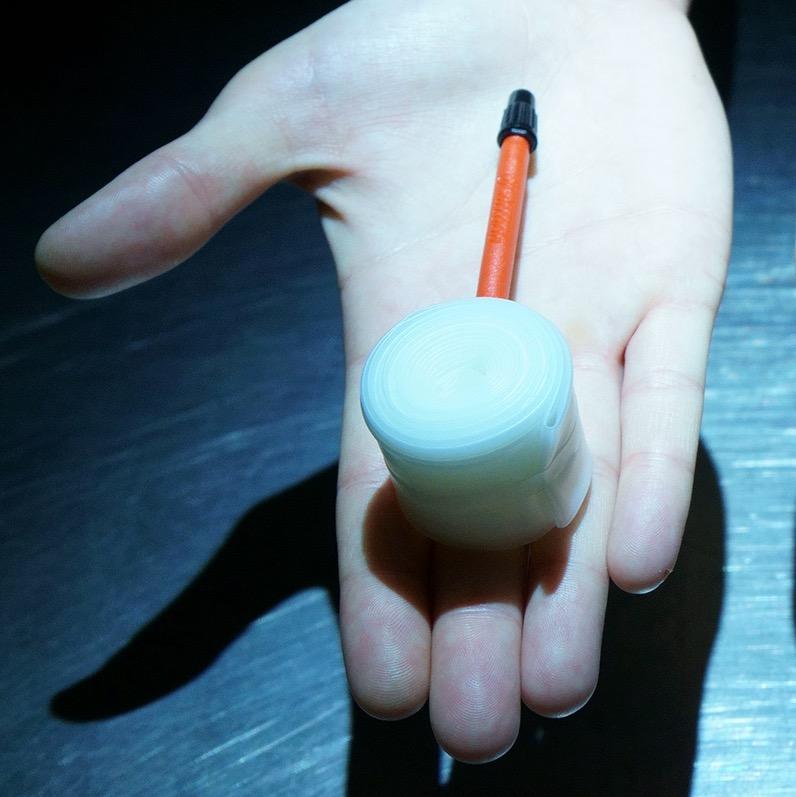
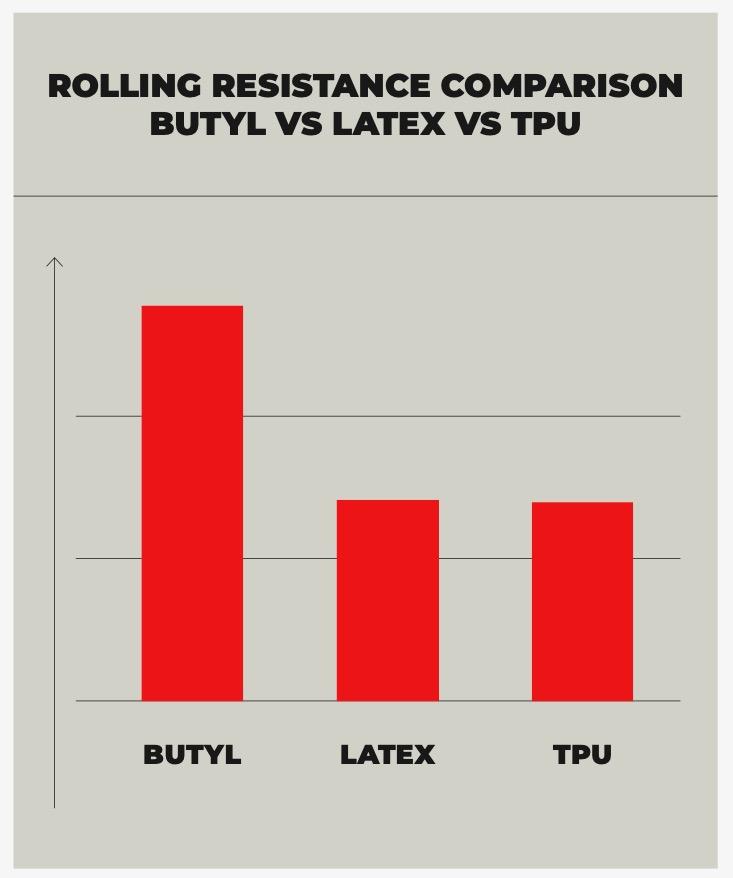

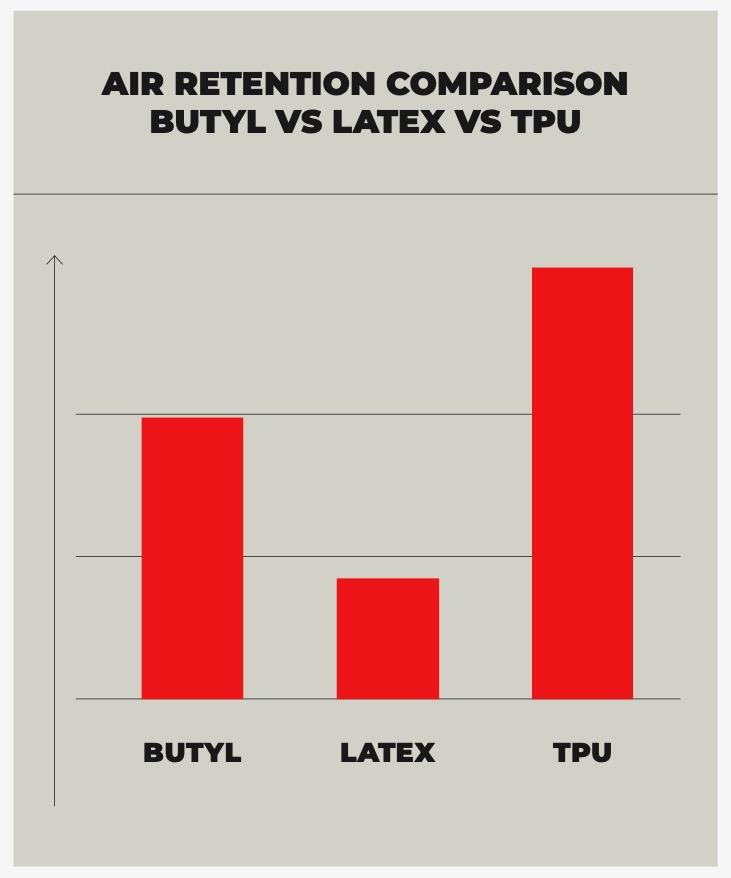
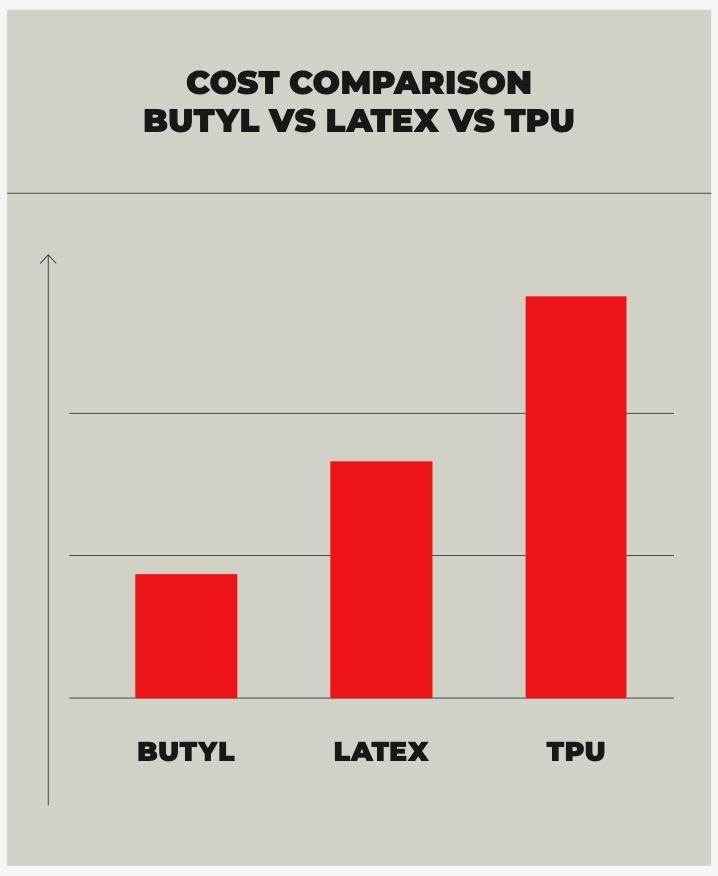

Add new comment
21 comments
I immediately noticed a difference in rolling resistance and acceleration when I switched to TPU.
What about the repairability of TPU?
Ok I found something: wipe with alcohol and stick on a patch.
And I also found the price of these things...
If you don't mind ordering from AliExpress, you can get them fairly cheaply
https://www.aliexpress.com/w/wholesale-tpu-inner-tube-700c-28.html
I ordered a couple and they took just over a week to turn up. I'm carrying one as an emergency (running tubeless), so I hope to never find out if they're any good.
Thanks but I've never heard of any of these brands.
That's why they're cheap.
I've done a bit of shopping recently on AliExpress and I've noticed that a lot of their products also end up on eBay, except that the eBay ones will often be double the price. I even had cause to return an item (I stupidly ordered two of the same item) and that was surprisingly trouble-free and cost under a fiver.
It's interesting to read actual experiences of a site which I assumed you order from but the goods never turn up and you can't do anything about it! Can you get cheap and durable cranks as well?
I haven't had any issue with non-delivery from AliExpress, whilst I have had that occasionally with eBay. Some of the cheap stuff obviously has quality issues and I did get a recall notice about a shoddy, cheap head torch that I got - it was being recalled due to banned chemicals being used during manufacture which isn't great, but I got my refund back without having to return the item.
I've eyed up some of the power meter cranksets on offer there, but they're still more expensive than I'd like to pay. I suspect the quality of those are fine as they're not stupidly cheap.
Try these 2.99
https://www.sjscycles.co.uk/inner-tubes/park-tool-gp2-glueless-patch-kit/
Really, when I'm using Conti Gator-Hardshells (the only option that seems to work for me on London roads), you have to wonder if changing to TPU will make that much difference to my speed?
"impressive reduction in weight and rolling resistance" - then their own graph (on this page) shows basically the same rolling resistance and you don't call it out? Disgraceful.
It doesn't matter which tube you use, it doesn't matter whether you run tubeless, all that matters is whether you've made the appropriate sacrificial offering to the puncture fairy. It's true that I have to wipe down the altar stone on a daily basis and that the neighbours have complained to environmental health but six punctures in 23 years clearly demonstrates the efficacy of the ritual.
But you have mentioned the p word twice in that comment.
More sacrifices!
...but think of the children!
A post like that is tantamount to slapping the P-fairy in the face
Well Vittoria latex was the one to beat: ttps://www.bicyclerollingresistance.com/specials/tpu-inner-tubes. So I think I might try Vittoria's TPU.
Tubeless is the answer by with the CV excellent Joe's ECO sealant....just carry a tyre boot and butyl tube if you happen to split the tyre and a dynaplug won't sort it.... If your a tube only.... Butyl is the answer...
Is it just me or did anyone else think they had arrived at a different kind of website on first seeing that picture?
If it hadn't been for those charts I'd have been sceptical.
I'm calling BS on the durability of latex tubes. My experience of running latex tubes (admittedly some years ago) was terrible. I got way more punctures than butyl and when punctured the tube would often tear open making any hope of repair impossible.
I suspect there's quite a variability between brands of latex, I've had one latex puncture (Vittoria) in 6500km, and that was from slamming a pothole (in a shadow). But I do have to pump them up every day. I carry a butyl tube for emergencies though.